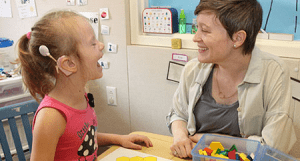Overcoming Hearing Loss: 5 Practical , Powerful & desired Strategies for Restoration
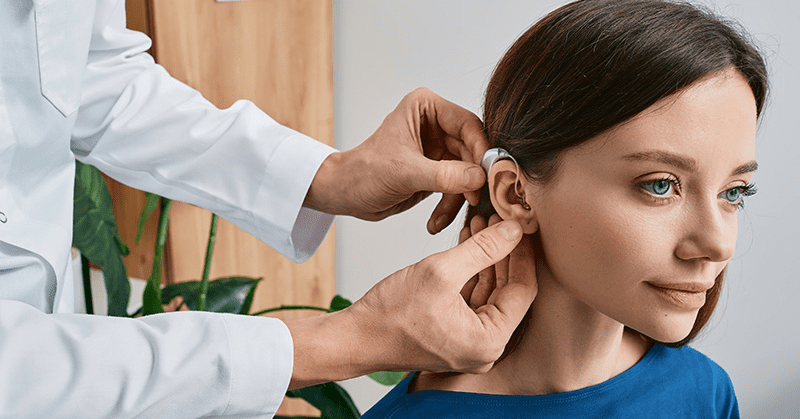
Overview
Hearing loss is a common condition that affects millions of people worldwide. It can be caused by various factors, including aging, exposure to loud noises, infections, and genetic factors. Hearing loss can range from mild to severe and can impact a person’s ability to communicate and engage in daily activities. Treatment options for hearing loss may include hearing aids, cochlear implants, and other assistive devices, depending on the severity and type of hearing loss. Early detection and intervention are crucial in managing hearing loss and improving the overall quality of life for individuals affected by this condition.
5 Powerful Strategies for Restoration
Restoring hearing loss is a complex process that requires careful consideration and appropriate interventions. Here are five powerful strategies that can help in the restoration of hearing loss:
-
Hearing Aids: Hearing aids are one of the most common and effective solutions for individuals with mild to moderate hearing loss. These small electronic devices amplify sounds, making it easier for the wearer to hear and communicate effectively.
-
Cochlear Implants: For severe to profound hearing loss, cochlear implants are a revolutionary option. These surgically implanted devices directly stimulate the auditory nerve, bypassing the damaged parts of the ear, and allow individuals to perceive sound signals.
-
Assistive Listening Devices: These devices work in conjunction with hearing aids or implants to enhance hearing in specific situations. They can be used in noisy environments, during phone conversations, or while watching TV, providing improved sound clarity.
-
Auditory Training: Auditory training programs can help individuals with hearing loss to enhance their listening and communication skills. These programs involve exercises and activities to improve speech understanding and sound recognition.
-
Hearing Protection: Preventing further hearing damage is crucial, especially for those at risk of noise-induced hearing loss. Wearing earplugs or earmuffs in loud environments can help protect the ears and prevent further deterioration.
It is important to note that the success of these strategies depends on the type and severity of hearing loss, as well as individual factors. Seeking guidance from a qualified audiologist or hearing healthcare professional is essential to determine the most suitable approach for each person’s unique needs.
Introduction:
Hearing loss is a common condition that affects individuals of all ages, from newborns to the elderly. It refers to a partial or complete inability to hear sounds in one or both ears. Understanding the different types of hearing loss is crucial in providing appropriate treatment and support. In this article, we will explore three main types of hearing loss: sensorineural, conductive, and mixed hearing loss.
Sensorineural Hearing Loss
Sensorineural hearing loss is the most common type of permanent hearing loss. It occurs when there is damage to the inner ear or the auditory nerve pathways that connect the ear to the brain. This type of hearing loss can be caused by various factors, including:

- Aging: As we age, the delicate structures of the inner ear can deteriorate, resulting in sensorineural hearing loss.
- Noise Exposure: Prolonged exposure to loud noises, such as working in noisy environments or attending loud concerts, can damage the hair cells in the inner ear.
- Genetics: Some individuals may inherit genetic mutations that make them more susceptible to sensorineural hearing loss.
- Medical Conditions: Certain medical conditions, such as Meniere’s disease, otosclerosis, or tumors, can contribute to sensorineural hearing loss.
- Medications: Certain medications, such as certain antibiotics or chemotherapy drugs, may have ototoxic effects and damage the inner ear.
Conductive Hearing Loss
Conductive hearing loss occurs when sound waves are unable to reach the inner ear effectively. It is often caused by problems in the outer or middle ear that obstruct the transmission of sound. Common causes of conductive hearing loss include:
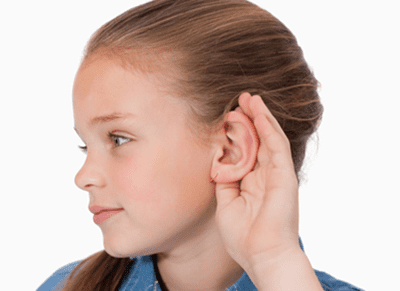
- Ear Infections: Infections in the middle ear, such as otitis media, can cause fluid buildup and interfere with sound transmission.
- Earwax Impaction: Excessive earwax can block the ear canal and prevent sound waves from reaching the eardrum.
- Ear Canal Blockage: Objects lodged in the ear canal or abnormal growths, such as tumors or bony growths, can obstruct sound transmission.
- Perforated Eardrum: A hole or tear in the eardrum can disrupt the conduction of sound waves.
- Abnormalities in the Middle Ear: Conditions like otosclerosis, where the middle ear bones become immobilized, can cause conductive hearing loss.
Mixed Hearing Loss
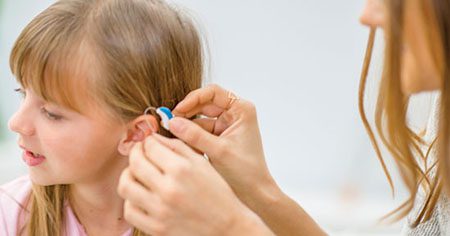
Mixed hearing loss refers to a combination of sensorineural and conductive hearing loss. It occurs when there is damage to both the inner ear and the outer or middle ear structures. Individuals with mixed hearing loss experience a combination of difficulties in sound perception and transmission.
The causes of mixed hearing loss can be a combination of the factors mentioned above for sensorineural and conductive hearing loss. It can result from chronic ear infections that lead to damage in both the middle ear and the inner ear structures or from a combination of age-related deterioration and ear canal blockage.
Symptoms of hearing loss:
Signs of Hearing Loss
Recognizing the signs of hearing loss is crucial for early detection and intervention. Common signs include:
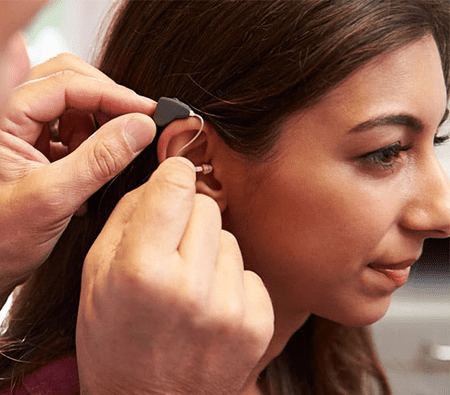
- Difficulty understanding speech, especially in noisy environments.
- Frequently asking others to repeat themselves.
- Struggling to follow conversations, particularly in group settings.
- Turning up the volume of the television or radio to higher levels than others.
- Withdrawal from social situations due to communication challenges.
- Tinnitus, which is a ringing, buzzing, or hissing sound in the ears.
- Misunderstanding or misinterpreting conversations or instructions.
- Feeling exhausted or stressed after prolonged listening or social interactions.
- Difficulty hearing high-pitched sounds like doorbells or phone rings.
- Family members or friends noticing changes in hearing abilities.
If you or someone you know experiences these signs, it is advisable to seek a comprehensive hearing evaluation from a qualified healthcare professional.
Tinnitus and Hearing Loss
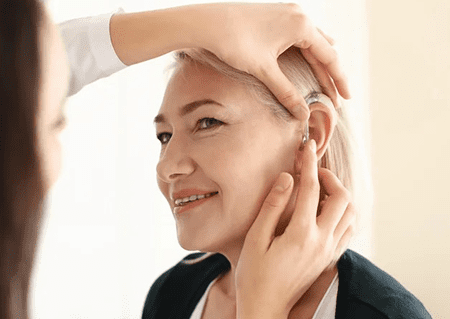
Tinnitus is the perception of sound in the ears or head without any external source. It is commonly associated with hearing loss, and the two often coexist. Tinnitus can manifest as ringing, buzzing, hissing, or other noises. The relationship between tinnitus and hearing loss is complex, and various factors can contribute to their association. One possible explanation is that damage to the auditory system, such as that seen in sensorineural hearing loss, can lead to the perception of tinnitus. Furthermore, tinnitus itself can sometimes contribute to emotional distress and affect one’s quality of life. It is important to consult with a healthcare professional if you experience bothersome tinnitus alongside hearing loss.
Sudden Hearing Loss as Symptoms of Hearing Loss
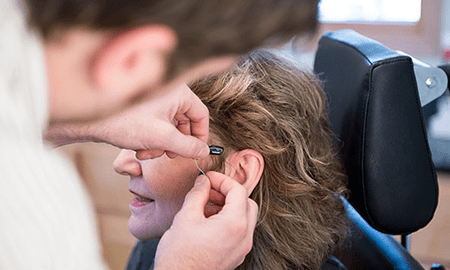
Sudden hearing loss refers to a rapid onset of significant hearing impairment in one or both ears within a short period, typically occurring over 72 hours or less. It is considered a medical emergency and requires immediate attention. The exact cause of sudden hearing loss is often unknown, but it is believed to be related to factors such as viral infections, vascular issues, or inner ear disorders. The symptoms of sudden hearing loss can vary, but they commonly include a sudden decrease in hearing, a feeling of fullness in the ear, dizziness, or tinnitus. If you experience sudden hearing loss, it is crucial to seek immediate medical attention to increase the chances of successful treatment and recovery.
Causes of Hearing Loss
Hearing loss can have various causes, ranging from environmental factors to underlying medical conditions. Some common causes include:
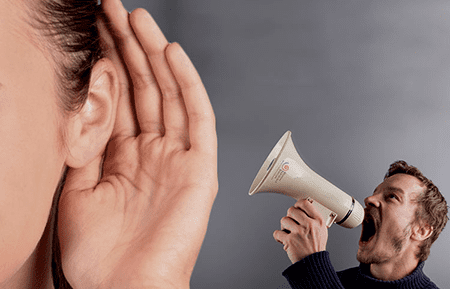
-
Noise Exposure: Prolonged exposure to loud noises, such as loud music, construction sites, or heavy machinery, can damage the delicate structures of the inner ear over time.
-
Aging: Age-related hearing loss, known as presbycusis, is a natural part of the aging process. It typically involves a gradual loss of hearing sensitivity and affects high-frequency sounds.
-
Genetics: Certain genetic factors can contribute to hearing loss. Some individuals are born with genetic mutations that affect the development and function of the inner ear.
-
Infections: Infections such as otitis media (middle ear infection) or otitis externa (swimmer’s ear) can cause temporary or permanent hearing loss if left untreated.
-
Medications: Certain medications, such as certain antibiotics, chemotherapy drugs, or high doses of aspirin, can have ototoxic effects and damage the structures of the inner ear.
-
Traumatic Injury: Head injuries or severe blows to the head can result in damage to the auditory system, leading to hearing loss.
-
Earwax Buildup: Excessive accumulation of earwax can cause blockages in the ear canal, leading to temporary hearing loss.
-
Medical Conditions: Certain medical conditions, including Meniere’s disease, otosclerosis, autoimmune disorders, and tumors, can contribute to hearing loss.
It’s important to remember that these are just some of the common causes of hearing loss. Each individual’s experience with hearing loss may differ, and a thorough evaluation by a healthcare professional is essential to determine the underlying cause.
Noise-Induced Hearing Loss

Noise-induced hearing loss occurs as a result of exposure to loud sounds. Prolonged or repeated exposure to excessive noise can damage the hair cells in the inner ear, leading to permanent hearing loss. This type of hearing loss is preventable with proper hearing protection measures. Common sources of noise-induced hearing loss include loud concerts, firearms, heavy machinery, and recreational activities such as motorcycling or using power tools. It is crucial to use ear protection, such as earplugs or earmuffs, in noisy environments to preserve hearing health.
Age-Related Hearing Loss

Age-related hearing loss, or presbycusis, is a natural and gradual decline in hearing sensitivity that occurs as part of the aging process. It usually affects both ears equally and primarily impacts the higher frequencies. The exact cause of age-related hearing loss is not fully understood, but it is believed to involve a combination of genetic, environmental, and lifestyle factors. Symptoms may include difficulty understanding speech, particularly in noisy environments, and a decreased ability to hear high-pitched sounds. While age-related hearing loss is permanent, hearing aids and other assistive listening devices can help individuals manage and improve their hearing abilities.
Diagnosis Process for Hearing Loss
When an individual experiences symptoms or suspects a loss of auditory function, a comprehensive diagnostic process is crucial. This process typically involves the following steps:
-
Medical History Evaluation: The healthcare professional will inquire about the individual’s medical background, including any known risk factors, exposure to loud noises, previous ear infections, or family history of auditory issues.
-
Physical Examination: A physical examination of the ears, known as otoscopy, is performed to assess the condition of the ear canal, eardrum, and outer ear.
-
Hearing Tests: Various tests are conducted to evaluate the individual’s auditory abilities. These tests may include pure-tone audiometry, speech audiometry, tympanometry, and otoacoustic emissions (OAE) testing.
-
Audiogram Interpretation: The results of the hearing tests are plotted on an audiogram, a visual representation of an individual’s hearing thresholds across different frequencies. This chart helps determine the type, degree, and configuration of auditory impairment.
-
Further Diagnostic Measures: In some cases, additional tests, such as auditory brainstem response (ABR) testing or imaging studies, may be recommended to assess the auditory pathways or identify any underlying structural abnormalities.
-
Consultation and Treatment Planning: Based on the test results, the healthcare professional will discuss the findings with the individual and recommend suitable treatment options. These may include hearing aids, assistive listening devices, medical interventions, or referral to specialized healthcare providers.
Audiogram for Diagnosing Auditory Impairment

An audiogram is a standardized graph used to illustrate an individual’s hearing thresholds at different frequencies. This tool plays a crucial role in diagnosing and categorizing auditory issues. By displaying the results of pure-tone audiometry, where individuals listen to a range of tones at varying frequencies and loudness levels, the audiogram helps determine the softest sounds they can perceive at different frequencies.
The audiogram features a horizontal axis representing frequency, measured in Hertz (Hz), ranging from low to high pitches. The vertical axis represents sound intensity or loudness, measured in decibels (dB), ranging from soft to loud sounds. The results are plotted as symbols on the graph, with each symbol indicating the individual’s hearing threshold at a specific frequency.
Analyzing the shape and pattern of the symbols on the audiogram allows healthcare professionals to identify the type of auditory impairment (e.g., sensorineural, conductive, or mixed) and its degree (e.g., mild, moderate, severe, or profound). This information is crucial for developing appropriate treatment plans and interventions.
Newborn Hearing Loss Screening
Screening newborns for auditory impairments is a vital step in early detection and intervention. These screening procedures aim to identify potential hearing problems shortly after birth, enabling prompt support for infants with auditory challenges and facilitating their language development and overall well-being.
The most common screening method is otoacoustic emissions (OAE) testing. This non-invasive test involves placing a small probe in the baby’s ear and playing sounds through it. The device measures the echo produced by the inner ear in response to the sounds. If the OAE response is absent or weak, further diagnostic testing, such as auditory brainstem response (ABR) testing, may be recommended to determine the degree and type of auditory impairment.
Newborn hearing loss screening is typically conducted before the baby leaves the hospital or shortly thereafter. It is a routine procedure that helps ensure early intervention and support for infants with auditory impairments, enabling them to access appropriate treatments and services during the critical stages of development.
Preventing Auditory Impairment
Taking proactive measures to prevent auditory impairment is crucial for maintaining healthy hearing. By adopting the following practices, individuals can reduce their risk of developing auditory issues:

-
Limiting Exposure to Loud Noises: It is important to minimize exposure to excessively loud noises, as prolonged or intense exposure can lead to auditory damage. When engaging in activities with high noise levels, such as attending concerts or using power tools, it is advisable to wear appropriate hearing protection, such as earplugs or earmuffs.
-
Maintaining Safe Listening Levels: When using headphones or earbuds, individuals should be mindful of the volume levels. It is recommended to listen at moderate volumes and take breaks to give the ears a rest.
-
Implementing Workplace Safety Measures: In occupational settings where employees are exposed to loud noises, employers should implement hearing conservation programs. These programs may include providing hearing protection, conducting regular noise assessments, and educating employees on safe practices.
-
Practicing Safe Listening Habits: When using audio devices, such as smartphones or personal music players, individuals should keep the volume at a comfortable level. Additionally, reducing the duration of exposure to loud sounds can help minimize the risk of auditory damage.
-
Taking Care of Ear Health: Maintaining good overall health, including regular exercise, a balanced diet, and proper management of underlying medical conditions, can contribute to healthy hearing. Additionally, avoiding the use of cotton swabs or other objects to clean the ears can prevent damage to the ear canal or eardrum.
Hearing Loss Prevention in the Workplace
Workplace environments can expose individuals to high levels of noise, increasing the risk of auditory impairment. To prevent hearing loss in the workplace, employers can implement the following measures:
-
Noise Monitoring: Conduct regular noise assessments to identify areas with excessive noise levels. Use sound level meters or dosimeters to measure noise levels accurately.
-
Engineering Controls: Implement engineering controls to reduce noise exposure, such as soundproofing, installing barriers, or using quieter machinery and equipment.
-
Administrative Controls: Establish protocols and procedures to minimize employees’ exposure to loud noises. This may include limiting the duration of exposure, providing quiet areas for breaks, or rotating tasks to reduce continuous noise exposure.
-
Personal Protective Equipment (PPE): Provide employees with appropriate hearing protection devices, such as earplugs or earmuffs, and ensure proper training on their usage and maintenance.
-
Education and Training: Conduct regular training sessions to raise awareness about the risks of noise exposure and the importance of hearing protection. Ensure employees understand the proper use of protective equipment and encourage regular hearing screenings.
Hearing Loss Prevention for Musicians
Musicians are particularly susceptible to auditory impairment due to prolonged exposure to loud music and instruments. To protect their hearing, musicians can consider the following preventive measures:
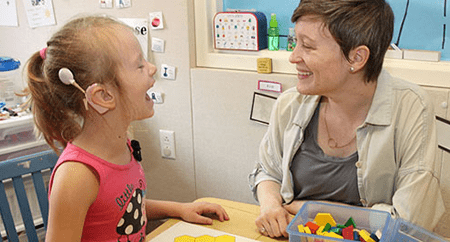
-
Use of Hearing Protection: Utilize musician-specific hearing protection, such as custom-made earplugs or in-ear monitors. These devices are designed to reduce noise levels while preserving sound quality and clarity.
-
Sound Monitoring: Pay attention to the sound levels during rehearsals, performances, and studio sessions. Consider using sound level meters or smartphone apps to monitor the decibel levels and ensure they remain within safe limits.
-
Take Breaks: Incorporate regular breaks during practice sessions or performances to give the ears time to rest and recover from prolonged exposure to loud sounds.
-
Positioning and Distance: Be mindful of instrument positioning and the proximity to speakers or amplifiers. Adjust the setup to reduce direct exposure to loud sound sources.
-
Seek Professional Guidance: Consult with audiologists or hearing healthcare professionals specializing in musicians’ auditory health. They can provide personalized advice, recommend appropriate hearing protection, and conduct regular hearing evaluations.
By implementing these preventive measures, individuals can significantly reduce the risk of auditory impairment and preserve their hearing health for the long term.
Hearing Aids for Auditory Impairment
For individuals with auditory challenges, hearing aids can be a valuable solution to enhance their ability to perceive sounds. These small electronic devices are designed to amplify and process sound, making it easier for individuals to communicate and engage with their surroundings. Hearing aids can be beneficial for individuals with various degrees and types of auditory impairment.
How Hearing Aids Work: A typical hearing aid consists of a microphone, amplifier, and speaker. The microphone picks up sound from the environment, which is then processed and amplified by the device. The amplified sound is delivered to the ear through a speaker, allowing the individual to hear more clearly.
Types of Hearing Aids: There are different types of hearing aids available, including behind-the-ear (BTE), in-the-ear (ITE), in-the-canal (ITC), and completely-in-the-canal (CIC) devices. Each type has its own advantages, and the choice depends on factors such as the individual’s specific needs, lifestyle, and cosmetic preferences.
Benefits of Hearing Aids: Hearing aids can improve speech comprehension, enhance sound localization, and increase overall quality of life for individuals with auditory challenges. They can help individuals better communicate with others, participate in social activities, and enjoy a more fulfilling auditory experience.
Cochlear Implants as a Treatment Option for Auditory Impairment
Cochlear implants are advanced medical devices that provide a treatment option for individuals with severe to profound hearing loss. Unlike hearing aids that amplify sound, cochlear implants directly stimulate the auditory nerve, bypassing damaged parts of the ear. This technology can significantly improve the hearing abilities of individuals who do not benefit from hearing aids alone.
How Cochlear Implants Work: A cochlear implant consists of two main components: an external part worn behind the ear and an internal part surgically implanted under the skin. The external component captures sound and converts it into electrical signals, which are then transmitted to the internal component. The internal component stimulates the auditory nerve, allowing individuals to perceive sound.
Candidacy for Cochlear Implants: Cochlear implants are typically recommended for individuals with severe to profound hearing loss who do not derive sufficient benefit from hearing aids. The candidacy evaluation involves various assessments, including hearing tests, speech perception tests, and an evaluation of the individual’s overall health and communication needs.
Benefits of Cochlear Implants: Cochlear implants can offer significant benefits for individuals with profound hearing loss. They can improve speech understanding, enhance communication skills, and promote auditory development in children. Cochlear implants enable individuals to engage more fully in their personal and professional lives, enjoy music, and participate in social interactions.
Treatments for Children with Auditory Challenges
Children with auditory challenges require specialized treatments and interventions to support their auditory development and language skills. Early intervention is crucial for optimizing outcomes and providing them with the best opportunities for communication and learning.
Auditory Verbal Therapy: Auditory Verbal Therapy (AVT) is an approach that focuses on developing listening and spoken language skills in children with auditory challenges. This therapy involves a highly trained professional working closely with the child and their family to promote auditory awareness, speech production, and language comprehension.
Education and Classroom Support: Children with auditory challenges may benefit from educational programs that offer specialized support for their auditory needs. This may include the use of assistive listening devices, classroom accommodations, speech therapy, and collaboration between teachers, speech-language pathologists, and audiologists.
Multidisciplinary Approach: Treating auditory challenges in children often requires a multidisciplinary approach. This may involve a team of professionals, including audiologists, speech-language pathologists, psychologists, educators, and medical specialists, who work together to provide comprehensive support and intervention tailored to the child’s unique needs.
By implementing these treatments and interventions, children with auditory challenges can make significant progress in their auditory development, language skills, and overall well-being.
Auditory Impairment and Mental Health
Auditory impairment can have a significant impact on an individual’s mental well-being and overall quality of life. The challenges and limitations associated with auditory difficulties can contribute to feelings of frustration, isolation, and emotional distress.
Psychological Effects: Individuals with auditory challenges may experience various psychological effects, such as increased stress, anxiety, and depression. The inability to communicate effectively, participate in social activities, or fully engage in conversations can lead to feelings of frustration and social isolation.
Seeking Support: It is crucial for individuals with auditory challenges to seek support and address their mental health needs. This may involve consulting with mental health professionals, joining support groups, or engaging in therapy sessions. Emotional support from family, friends, and loved ones can also play a crucial role in managing the psychological impact of auditory impairment.
Social Impact of Auditory Challenges
Auditory challenges can have a profound social impact on individuals, affecting their interpersonal relationships, communication abilities, and participation in various social activities.
Communication Barriers: Individuals with auditory challenges may encounter communication barriers in both personal and professional settings. Difficulties in understanding conversations, following instructions, or participating in group discussions can lead to feelings of frustration and exclusion.
Social Isolation: The challenges of auditory impairment can contribute to social isolation and withdrawal from social interactions. Individuals may avoid social gatherings, public events, or noisy environments due to difficulties in hearing and understanding others.
Supportive Environments: Creating supportive environments can help individuals with auditory challenges overcome social barriers. This may include ensuring proper communication accommodations, such as using assistive listening devices, utilizing visual cues during conversations, or promoting inclusive practices in social settings.
Hearing Loss and Cognitive Decline
Research suggests a link between auditory impairment and cognitive decline, including an increased risk of developing conditions such as dementia and Alzheimer’s disease.
Cognitive Load: Individuals with auditory challenges may experience increased cognitive load when trying to understand speech or process auditory information. The brain exerts additional effort to compensate for the hearing difficulties, which can impact cognitive functions over time.
Association with Dementia: Studies have found that untreated hearing loss is associated with a higher risk of cognitive decline and dementia. The exact mechanisms behind this association are still being studied, but it is believed that the reduced sensory input and social engagement related to auditory challenges contribute to cognitive changes.
Importance of Treatment: Addressing auditory impairment through appropriate interventions, such as hearing aids or cochlear implants, may help reduce the cognitive impact of hearing loss. Regular hearing evaluations, hearing rehabilitation, and staying socially and mentally active are important strategies for maintaining cognitive health.
By recognizing the social and cognitive impact of auditory challenges and taking proactive steps to address them, individuals with auditory impairment can enhance their overall well-being and quality of life.
Related Links
Conclusion:
In conclusion, auditory impairment has a significant impact on individuals, affecting their communication abilities, mental well-being, social interactions, and cognitive health. Understanding the various aspects of auditory challenges and seeking appropriate interventions is crucial for managing this condition and improving overall quality of life.
Individuals with auditory challenges should prioritize early detection and diagnosis, as well as regular hearing evaluations to monitor their auditory health. Treatment options such as hearing aids and cochlear implants can provide significant benefits in improving hearing abilities and enhancing communication.
Additionally, it is essential to address the psychological and social aspects of auditory impairment. Seeking support from mental health professionals, joining support groups, and creating supportive environments can help individuals cope with the emotional and social challenges associated with auditory difficulties.
Furthermore, the association between auditory impairment and cognitive decline highlights the importance of managing hearing loss to preserve cognitive health. Addressing auditory challenges through appropriate interventions and staying socially and mentally active are key strategies for reducing the cognitive impact of auditory impairment.
Q: 1. What are the common signs of auditory impairment?
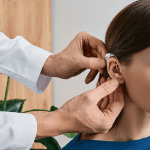
A: Common signs of auditory impairment include difficulty understanding speech, frequently asking others to repeat themselves, turning up the volume excessively, and experiencing ringing or buzzing sounds in the ears (tinnitus).
Q: 2. Can auditory impairment be prevented?
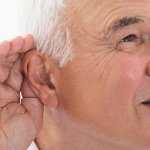
A: While some causes of auditory impairment are unavoidable, there are preventive measures individuals can take, such as protecting their ears from loud noises, maintaining good ear hygiene, and seeking early treatment for ear infections.
Q: 3. How can I communicate effectively with someone who has auditory challenges?
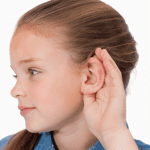
A: When communicating with someone with auditory challenges, it is helpful to speak clearly and face them directly. Use visual cues, gestures, and written notes if necessary. Minimize background noise and choose quiet environments for conversations.
Q: 4. Are there any support groups or resources available for individuals with auditory challenges?
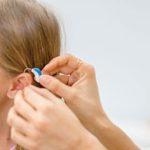
A: Yes, there are support groups, online communities, and resources available for individuals with auditory challenges and their families. These platforms offer information, guidance, and a supportive community where individuals can share their experiences and find encouragement.
Q: 5. Can auditory impairment be reversed completely?

A: The extent to which auditory impairment can be reversed depends on the underlying cause and individual factors. While some cases can be improved or managed with interventions like hearing aids or cochlear implants, complete restoration of hearing may not always be possible.
More Links
Types of Hearing Loss |
Deafness |
causes and treatments |
Causes Hearing Loss |
